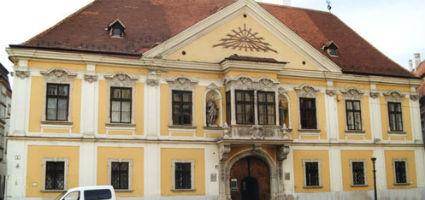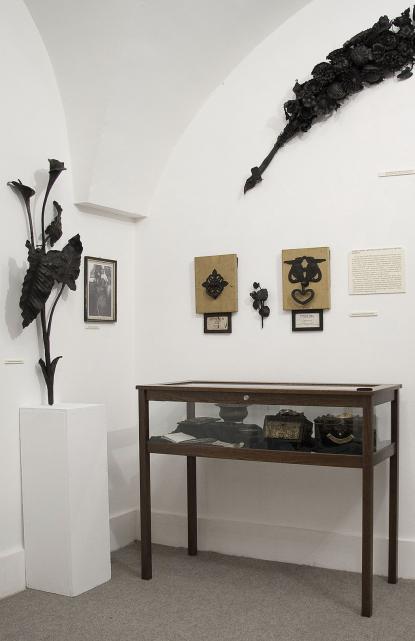2024. May 5. Sunday
János Xántus Museum - Győr
 |
Address: 9022, Győr Széchenyi tér 5.
Phone number: (96) 310-588
E-mail: xantus@gymsmuzeum.hu
Opening hours: 01.10-01.04.: Tue-Sat 10-16
|
The exhibition has closed for visitors.
2009.08.19. - 2009.10.25.
Museum tickets, service costs:
|
Individual ticket for adults
|
800 HUF
|
|
|
Individual ticket for adults
(valid for the temporal exhibitions)
|
300 HUF
|
|
|
Individual ticket for students
|
400 HUF
|
|
|
Individual ticket for students
(valid for the temporal exhibitions)
|
150 HUF
|
|
|
Individual ticket for pensioners
|
400 HUF
|
|
|
Individual ticket for pensioners
(valid for the temporal exhibitions)
|
150 HUF
|
|
|
Ticket for families
|
1800 HUF
|
/ family
|
|
Season ticket for students
(school season ticket )
|
22000 HUF
|
/ half a year
|
|
Guide
|
3000 HUF
|
Our exhibition tries to catch the changing atmosphere of the city life in the past through a selection of the unique items of the collection of the 150 year-old museum.

Original documents reflect the renewal of the Christian life and the repopulation of the town and its outskirts in the 17th century after four years of the Turkish occupation. Maps, ground-plans, vistas and a 3D virtual film show the building historical development of Győr from the time of the fortress-town until the demolishing of the walls and bastions which opened up space to the modern development in the 1820s.
The portraits of the one-time inhabitants are recalled by a selection of the talbotypes taken by Josef Skopall in the middle of the 19th century.
The memory of the builders of the town is remembered by the relics of the bricklayer and joiner guilds.
A technical feat of 1908 is shown on a series of photographs showing the transportation of a steel bride by means of barges from its old place to a new one. The wrought iron nails to this bridge were made by the gipsy smiths who lived in one of the suburbs called Újváros. A reconstruction of a gipsy "nail smiths" working in his pit calls back their memory.
Monumental wrought iron garlands representing the flowers and vegetables of Hungary, and mastery artworks of Bandi Schima remember us the life and work of another smith having lived in Győr who developed his craft into art.
The final block is a scene of the market in the Széchenyi Square as the main meeting place of the townspeople and the villagers of the surrounding region.

Original documents reflect the renewal of the Christian life and the repopulation of the town and its outskirts in the 17th century after four years of the Turkish occupation. Maps, ground-plans, vistas and a 3D virtual film show the building historical development of Győr from the time of the fortress-town until the demolishing of the walls and bastions which opened up space to the modern development in the 1820s.
The portraits of the one-time inhabitants are recalled by a selection of the talbotypes taken by Josef Skopall in the middle of the 19th century.
The memory of the builders of the town is remembered by the relics of the bricklayer and joiner guilds.
A technical feat of 1908 is shown on a series of photographs showing the transportation of a steel bride by means of barges from its old place to a new one. The wrought iron nails to this bridge were made by the gipsy smiths who lived in one of the suburbs called Újváros. A reconstruction of a gipsy "nail smiths" working in his pit calls back their memory.
Monumental wrought iron garlands representing the flowers and vegetables of Hungary, and mastery artworks of Bandi Schima remember us the life and work of another smith having lived in Győr who developed his craft into art.
The final block is a scene of the market in the Széchenyi Square as the main meeting place of the townspeople and the villagers of the surrounding region.
